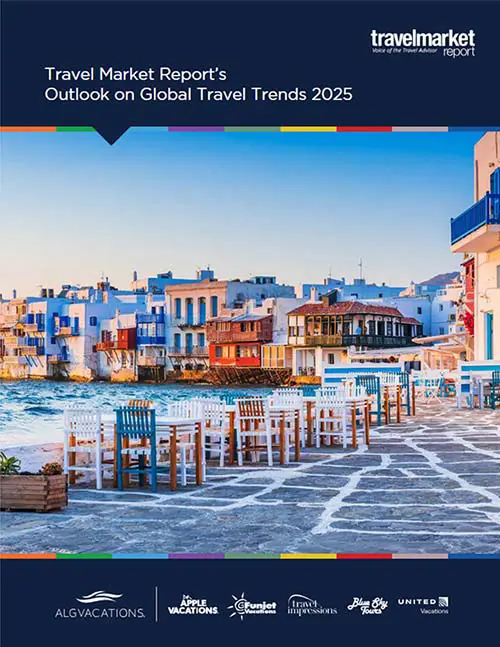Advisors Have to Work Harder to Deliver Authentic Culinary Travel Experiences
by Richard D'Ambrosio
More vacationers seeking out culinary experiences, and more suppliers and destinations are trying to meet the demands of travelers from the U.S.. Photo: Shutterstock
Culinary tourism can be an exceptional opportunity to build a luxury travel business. But as demand has increased, and cable television programming exposes more consumers to lesser-known venues and destinations, and more ethnic recipes and cooking styles, delivering on the expectations of high-end clientele is becoming more difficult.
“Travelers and consumers alike are more obsessed than ever with everything to do with food and drink,” according to the World Food Travel Association’s (WFTA) State of the Food Travel Industry Report, published in January 2019.
However, “the food and drink experiences provided by businesses and destinations often don’t match visitor expectations.” Surveying an expert group of industry members, the FTA found that only 51% were satisfied with how suppliers and destinations were meeting consumer expectations. On a 1 to 5 scale, the panelists rated performance at an average of 3.46.
Also, only 44% of the panelists said they were satisfied with the industry’s ability to meet traveler expectations for “unique or innovative experiences,” with an average ranking of 3.33 on a 1 to 5 scale.
Offering culinary enrichment is “easy to a certain point, but then it gets tough as you have to deal with the smaller, authentic experiences,” said Leila Peverett Coe, owner of Eat Drink Vacations, in Orlando, Florida. “There are cities like Barcelona and Amsterdam that are suffering from too much tourism, and it’s leaking over into dining now.”
So much of the consumer demand is being driven by social media, cable television, and most recently, on-demand programming from channels like Netflix, the WFTA said in their report.
“Everyone’s pretty Instagram pictures make their friends and followers think, ‘I want to eat this. I want to drink that,’” Peverett Coe said. “So now I’m upping my game on social media to get more requests from travelers interested in food. I’m following my clients and seeing who is responding to posts, and why. What are they looking to experience?”
For example, Peverett Coe had a client who wanted an exclusive dining experience in Slovenia, after seeing the family’s business on an episode of “The Chef’s Table.”
“It was in the hills in the middle of the countryside,” Peverett Coe said. “You wouldn’t have known about it, except now, with tons of cooking shows, once people learn about a local specialty, a successful chef, they want that experience.”
Unfortunately, with more vacationers seeking out culinary experiences, and more suppliers and destinations trying to meet the demands of travelers from the U.S., “we’re seeing a standardization, and in some cases, Americanization of local venues and cuisine,” said Kathryn Kelly, executive chef with Oceania Cruises.
The WFTA’s panelists agreed. Only 44% were satisfied with the industry’s efforts to protect local heritage through culinary tourism, with an average rating of 3.21 on a 1 to 5 scale.
This standardization is due in part to the fact that “authenticity” is subjective for most people, said Erik Wolf, WFTA president. This has ramifications for how travel advisors sell culinary travel, because they need to be clear if they are selling to a true “foodie,” or someone who simply loves ethnic foods.
For one person, “authenticity” could be “their grandmother’s original recipe. For another, it could be a historic recipe endemic to the region in question,” Wolf said. “To another, it could be the food they grew up with. Think Italian-American food versus Italian food versus Tuscan, Genovese, Ligurian or Apulian cuisines. Really, it’s up to the destination and its stakeholders to define their own authenticity. And how they define authenticity may not be commensurate with how visitors define authenticity.”
WFTA believes the greatest opportunity for growth in culinary travel is with in-home experiences, followed by multi-day tours focused on food and drink. The third greatest opportunity is with visits to working farms or orchards.
More conventional and established experiences, like cooking classes, gourmet chef dining events, and visits to distilleries are expected to grow slower and offer less opportunity, members of the WFTA said.
Keeping it small
Oceania’s Kelly took a leave of absence from teaching at the prestigious Culinary Institute of America in Hyde Park, New York, in 2011 to build Oceania’s onboard cooking classes.
As Oceania clientele got to know her, they started asking Kelly where she was traveling to next. Realizing there was a market for her to lead small groups of clients on land-based excursions, Oceania started offering experiences focused on educating these discriminating cruisers.
But over eight years, Kelly started noticing clients from other tours dining at the same venues. “It’s hard to deliver an ‘authentic’ experience when two more companies have their tour groups lined up right behind you,” she said.
The WFTA’s Wolf agrees: “The notion of overtourism is now rearing its head in food tourism. Think cruises ships of thousands of passengers disembarking in Barcelona, all looking for paella, which is actually from the Valencia area three hours to the south. In this situation, thousands of people are dumped on a destination and demand an ‘authentic experience’ which is not authentic to that area, even if they do find good paella.
“This then starts to introduce globalization of cuisine. If you can have an outstanding paella in Barcelona, New York or Seoul, is it still authentic if the dish originated from Valencia? If everyone can get a great quality dish of every food type available on Earth, then the reasons to travel because of food and drink begin to diminish.”
To combat this effect, Oceania refreshes their offerings about every three years, Kelly said, to ensure it is delivering experiences that feel less like a commodity, and more like the dining experience of local residents.
“The funny thing is, I could take you to popular tourist destinations, like Rome, or Melbourne, and find 20 unbelievable places for authentic cuisine outside of the main tourism areas. It just takes a lot of personal investment to find them, to establish the relationships and gain the trust of the chefs, the families, that own these venues. There are probably 30 places in Valencia where you could have amazing experiences, but you can only take a handful of customers, because anything more would overwhelm them,” Kelly said.
“I’m finding that there are restaurants outside of the tourist districts that offer just as good an experience, but you have to seek them out to offer your client the experience they are looking for,” said Peverett Coe.
“I try to work with tour operators who work with small groups and local vintners for an authentic experience. I have a great wine guide in Tuscany who will take my clients to these places that aren’t on the standard tour,” she said. “My clients don’t want to have coffee at Starbucks in Vienna, and that’s what I encourage.”
Consumers want to taste and learn
Another way that agents can enrich their culinary travel offerings is by ensuring that the suppliers they are working with are building in the historical and social context that make culinary travel experiences more enriching, Kelly said.
All of Oceania’s land-based culinary excursions are chef-led. “We personally know the guides, the operators, and they know that they have to put the food and how it is prepared in some kind of historical, and social, context. These can’t be check-the-box experiences for our clients,” Kelly explained.
Additionally, Oceania has 12 members on its culinary faculty, all studying the different cultures and destinations that their ships sail to, to develop the cruise line’s culinary excursions. Kelly gave an example of how the ostentatious celebrations of Ottoman Empire era rulers impacted Turkey’s cuisine, especially at the smaller establishments that Oceania likes to seek out.
“These meals required hundreds of locals to cook them. These traditions, the spices, the cooking skills, were learned by so many of the peasants, and that knowledge and tradition has been passed down through family members over the centuries,” Kelly said. “It’s why the typical chef in Turkey knows 100 different spices they can cook with. Our clientele wants to understand their meals in this kind of context.”
























